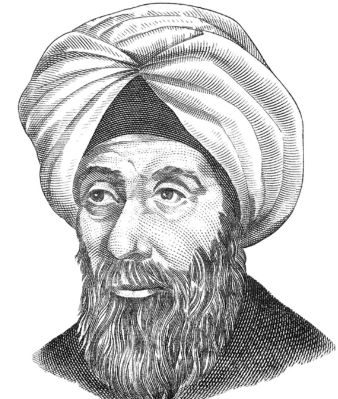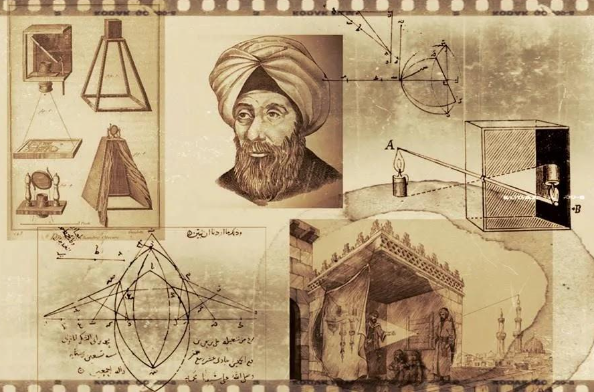- +971 4 837 83 81
- info@fandascientificme.com
History of Spectroscopy in the Middle East: From Ancient Times to Modern Applications

- 21.Janvier.2024
Spectroscopy has a long and rich history in the Middle East, dating back to ancient times when scientists and scholars first began to study the properties of light and its interactions with matter. Over the centuries, Middle Eastern scientists made significant contributions to the field of spectroscopy, developing new techniques and instruments that paved the way for modern-day spectroscopic research.
One of the earliest known examples of spectroscopic research in the Middle East dates back to the 10th century, when the Persian polymath Ibn Sina (also known as Avicenna) used a prism to split sunlight into its component colors and study the properties of each color. Ibn Sina’s work laid the foundation for later spectroscopic research in the region, which continued to flourish throughout the centuries.
Today, spectroscopy remains an important area of research in the Middle East, with scientists and scholars continuing to make significant contributions to the field. From the development of new spectroscopic techniques to the study of the properties of materials at the molecular level, the history of spectroscopy in the Middle East is a testament to the region’s rich scientific heritage.
Origins of Spectroscopy in the Middle East
Spectroscopy, the study of the interaction between matter and electromagnetic radiation, has a long history in the Middle East. The earliest known work on spectroscopy in the region dates back to the 9th century, with the work of the Persian scientist, Al-Kindi.
Al-Kindi’s work focused on the properties of light and color, and he is credited with developing the first known theory of vision in the Islamic world. He was also one of the first scientists to recognize the importance of the refraction of light, which he observed through the use of a glass prism.
In the 11th century, the Persian polymath, Ibn al-Haytham, continued the work of Al-Kindi, and made significant contributions to the field of optics. He is best known for his work on the nature of light and the formation of images, which he explored through the use of lenses and mirrors.
Over the centuries, scholars in the Middle East continued to build on the work of Al-Kindi and Ibn al-Haytham. In the 17th century, the Persian scientist, Muhammad Baqir Yazdi, developed a method for measuring the refractive index of liquids using a prism. This was a significant advancement in the field of spectroscopy, as it allowed scientists to study the properties of liquids in greater detail.

In the 19th and 20th centuries, spectroscopy continued to evolve in the Middle East, with the contributions of scientists such as Ahmed Zewail, who won the Nobel Prize in Chemistry in 1999 for his work on femtochemistry.
Overall, the history of spectroscopy in the Middle East is a rich and diverse one, with many important contributions to the field made by scholars over the centuries.

Influential Middle Eastern Spectroscopists
Alhazen's Contributions
Alhazen, called the Father of Optics, also known as Ibn al-Haytham, was a renowned physicist, mathematician, and astronomer born in Basra, Iraq, around the year 965. He made significant contributions to the field of optics, including the study of light and vision. His work on the principles of optics greatly influenced the development of spectroscopy.
Alhazen’s pioneering work on optics included his study of the refraction, reflection, and dispersion of light. He also developed a theory of vision that explained how the eye perceives light. His insightful investigations not only laid the foundation for spectroscopy but also had a profound impact on the field of modern photography.

Alhazen’s exploration of the behaviour of light, particularly in terms of refraction and reflection, laid the groundwork for the fundamental principles of optics that underlie modern photographic techniques. His understanding of the interaction between light and matter provided essential insights into the formation of images, contributing to the later innovations in photography.
Born around 965, Alhazen’s intellectual legacy endured long after his death, which occurred around 1040. His lifetime achievements continue to shape the understanding of optics and light-related phenomena, leaving an indelible mark on scientific disciplines that extend from spectroscopy to the captivating realm of modern photography.

Illustration of some of the principles discovered by Alhazen
Omar Khayyam's Studies

Omar Khayyam was a Persian mathematician, astronomer, and poet who lived in the 11th and 12th centuries. He is best known for his work on algebra and geometry, but he also made significant contributions to the field of optics.
Khayyam’s work on optics included his study of the properties of light and the refraction of light through different media. He also developed a method for measuring the angle of incidence and the angle of refraction of light passing through a prism. His work on optics laid the foundation for the development of spectroscopy, which has become an essential tool in modern science.
Overall, the contributions of Alhazen and Omar Khayyam to the field of optics have had a significant impact on the development of spectroscopy in the Middle East and beyond. Their groundbreaking work laid the foundation for the study of the interaction between light and matter, and their legacy continues to influence the study of optics and spectroscopy today.
Development of Spectroscopic Techniques
Flame Spectroscopy
Flame spectroscopy is a method of spectroscopy that involves heating a sample in a flame to produce light, which is then analyzed to determine the chemical composition of the sample. This technique was first developed by Gustav Kirchhoff and Robert Bunsen in the mid-19th century, and it quickly became an important tool for chemical analysis.

In the Middle East, flame spectroscopy was used extensively in the 20th century for the analysis of minerals, metals, and other materials. Researchers in the region made significant contributions to the development of the technique, including the design of specialized instruments and the development of new analytical methods.
Optical Spectroscopy
Optical spectroscopy is a technique that uses light to probe the properties of materials. This technique includes a range of methods, including absorption spectroscopy, fluorescence spectroscopy, and Raman spectroscopy.
In the Middle East, optical spectroscopy has been used extensively for the analysis of a wide range of materials, including biological samples, minerals, and metals. Researchers in the region have developed new methods for the analysis of complex samples, and have made significant contributions to the development of the field.
Overall, the development of spectroscopic techniques in the Middle East has been driven by a combination of scientific curiosity and practical applications. Today, researchers in the region continue to use spectroscopy to explore the properties of materials and to develop new analytical methods.
Modern Spectroscopy in the Middle East
Educational Institutions
The Middle East has a rich history of scientific education, and spectroscopy has become an important part of the curriculum in many universities in the region. Several institutions have established dedicated research centres, including the King Abdullah University of Science and Technology in Saudi Arabia and the American University of Beirut in Lebanon.
These centres focus on both fundamental and applied research, with a particular emphasis on developing new spectroscopic techniques and applications. They also offer training programs and workshops to students and researchers from across the region, helping to build a strong foundation for future research in the field.
Technological Advancements
In recent years, the Middle East has seen significant advancements in spectroscopic technology, particularly in the areas of infrared and Raman spectroscopy. Researchers in the region have developed new techniques for detecting and analyzing complex molecules, including proteins and DNA, and have made important contributions to the development of new materials and devices.
One notable example is the development of new sensors for detecting environmental pollutants and toxins. Researchers at the Masdar Institute of Science and Technology in Abu Dhabi have developed a highly sensitive Raman sensor that can detect trace amounts of pollutants in water and air. This technology has the potential to revolutionize environmental monitoring and could have significant implications for public health.
Overall, the Middle East has emerged as a major player in the field of spectroscopy, with a growing number of researchers and institutions dedicated to advancing the science and technology of this important field.
International Collaboration and Contributions
Spectroscopy in the Middle East has seen significant contributions from international collaborations. Researchers from Europe, North America, and Asia have collaborated with Middle Eastern scientists to advance the field. For instance, in the early 2000s, a team of scientists from Iran and Canada collaborated to develop a new technique for detecting pesticides in water using Raman spectroscopy.
In addition to collaborations, Middle Eastern scientists have also made significant contributions to the field of spectroscopy. For example, a team of researchers from Saudi Arabia developed a new method for detecting explosives using laser-induced breakdown spectroscopy. Their work was published in the Journal of Analytical Atomic Spectrometry in 2016.
The Middle East has also been home to several international conferences on spectroscopy. In 2019, the International Conference on Spectroscopy and Applications was held in Dubai, United Arab Emirates. The conference brought together researchers from around the world to discuss recent advances in the field.
Overall, international collaborations and contributions have played a crucial role in the development of spectroscopy in the Middle East. These collaborations have allowed Middle Eastern scientists to learn from and work with experts from around the world, leading to significant advancements in the field.
-
 The SignatureSPM, Revolutionising Multimodal Characterization for Academic and Industrial Laboratories
The SignatureSPM, Revolutionising Multimodal Characterization for Academic and Industrial Laboratories -
 FANDA Scientific Partners with GoyaLab to Bring Spectrometry Expertise to the MENA Region
FANDA Scientific Partners with GoyaLab to Bring Spectrometry Expertise to the MENA Region -
 Hydrogen as an Energy Source for the Future?
Hydrogen as an Energy Source for the Future? -
 History of Spectroscopy in the Middle East: From Ancient Times to Modern Applications
History of Spectroscopy in the Middle East: From Ancient Times to Modern Applications
